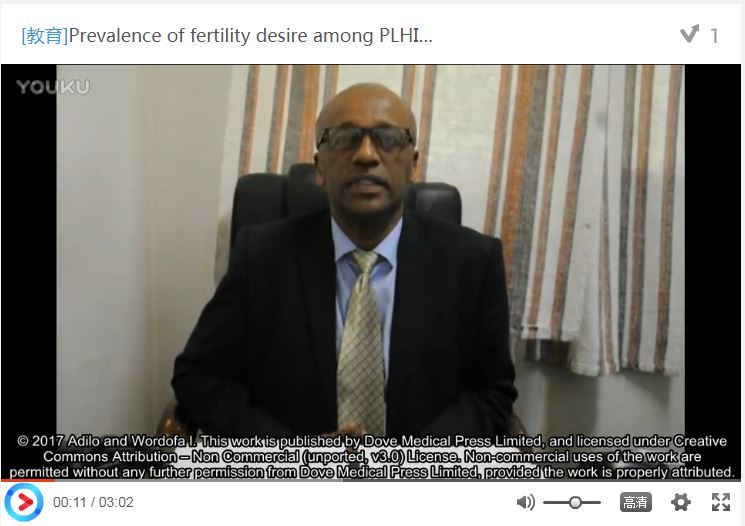9 0 6 7 6
论文已发表
注册即可获取德孚的最新动态
IF 收录期刊
- 2.6 Breast Cancer (Dove Med Press)
- 3.9 Clin Epidemiol
- 3.3 Cancer Manag Res
- 3.9 Infect Drug Resist
- 3.6 Clin Interv Aging
- 4.8 Drug Des Dev Ther
- 2.8 Int J Chronic Obstr
- 8.0 Int J Nanomed
- 2.3 Int J Women's Health
- 3.2 Neuropsych Dis Treat
- 4.0 OncoTargets Ther
- 2.2 Patient Prefer Adher
- 2.8 Ther Clin Risk Manag
- 2.7 J Pain Res
- 3.3 Diabet Metab Synd Ob
- 4.3 Psychol Res Behav Ma
- 3.4 Nat Sci Sleep
- 1.9 Pharmgenomics Pers Med
- 3.5 Risk Manag Healthc Policy
- 4.5 J Inflamm Res
- 2.3 Int J Gen Med
- 4.1 J Hepatocell Carcinoma
- 3.2 J Asthma Allergy
- 2.3 Clin Cosmet Investig Dermatol
- 3.3 J Multidiscip Healthc

Prevalence of fertility desire and its associated factors among 15- to 49-year-old people living with HIV/AIDS in Addis Ababa, Ethiopia: a cross-sectional study design
Authors Adilo TM, Wordofa HM
Received 2 February 2017
Accepted for publication 20 June 2017
Published 30 August 2017 Volume 2017:9 Pages 167—176
DOI https://doi.org/10.2147/HIV.S133766
Checked for plagiarism Yes
Review by Single-blind
Peer reviewers approved by Dr Akshita Wason
Peer reviewer comments 2
Editor who approved publication: Professor Bassel Sawaya
Background: The magnitude of unprotected sex to satisfy the desire for
fertility among people living with HIV/AIDS (PLHIV) may rise more due to the
availability of antiretroviral therapy (ART) in most HIV-affected countries.
This could, however, have the risk of passing on HIV to sexual partners and
children. The aim of this study, therefore, was to determine the magnitude and
factors associated with the fertility desire of reproductive-age PLHIV in Addis
Ababa, Ethiopia, for research-based and timely actions.
Methods: A cross-sectional study was carried out from April to
June 2016 among 442 randomly selected, reproductive-age PLHIV who had been
attending ART clinics in Addis Ababa. Twelve experienced and trained nurses
collected the data. The questionnaire was pretested and
interviewer-administered, and the interview was executed after obtaining
voluntary consent from each study subject. The data were then cleaned and
analyzed by using Epi Info version 3.5.4 and SPSS version 20.0, respectively.
Binary logistic regression was done in order to describe the association of
fertility desire with some sociodemographic and sexual behavior-related
factors.
Results: Among the total 441 respondents, 54.6% reported the
desire for fertility, 87% disclosed their HIV status, 24.3% had two or more
sexual partners in the earlier year, and only 55.6% used a condom during their
last sexual intercourse. In addition, current health status (AOR=2.03; 95% CI:
1.01–4.07) and partner being tested for HIV (AOR=6.31; 95% CI: 1.35–29.64)
showed statistically significant associations with fertility desire during
multivariate logistic regression analysis.
Conclusion: A considerable number of PLHIV in the study area
reported a desire for having children. Current health status and partner being
tested for HIV were found to be factors associated with the fertility desire
among PLHIV. Thus, more efforts to effectively address the health concerns
related to fertility desire and risky sexual behavior among HIV-infected people
of reproductive age could play a significant role in prevention and control
measures against HIV/AIDS epidemic.
Keywords: fertility
desire, PLHIV, reproductive age, risky sexual behavior, Ethiopia
摘要视频链接:Prevalence of fertility
desire among PLHIV in Addis Ababa
